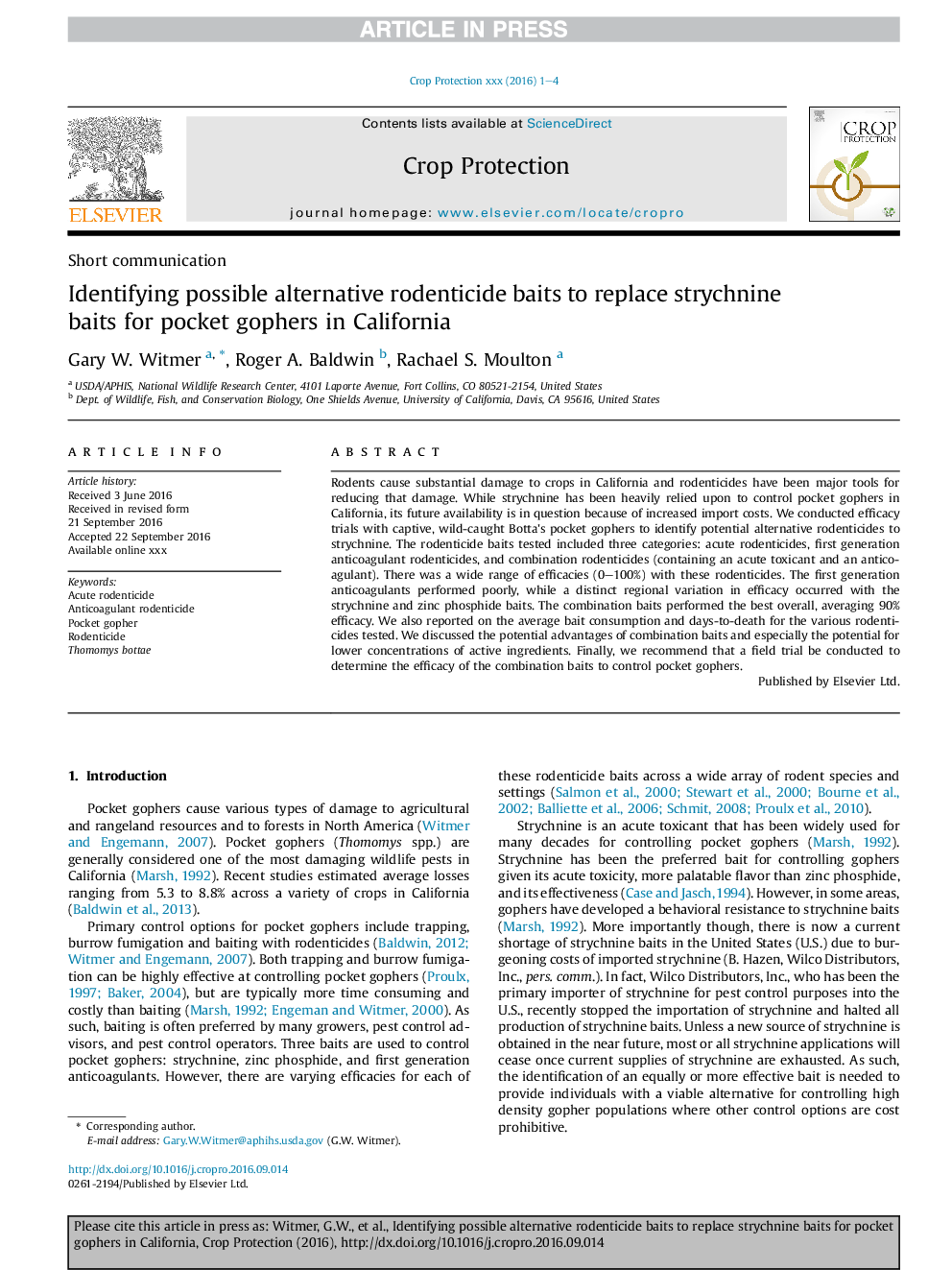| Article ID | Journal | Published Year | Pages | File Type |
|---|---|---|---|---|
| 8878378 | Crop Protection | 2017 | 4 Pages |
Abstract
Rodents cause substantial damage to crops in California and rodenticides have been major tools for reducing that damage. While strychnine has been heavily relied upon to control pocket gophers in California, its future availability is in question because of increased import costs. We conducted efficacy trials with captive, wild-caught Botta's pocket gophers to identify potential alternative rodenticides to strychnine. The rodenticide baits tested included three categories: acute rodenticides, first generation anticoagulant rodenticides, and combination rodenticides (containing an acute toxicant and an anticoagulant). There was a wide range of efficacies (0-100%) with these rodenticides. The first generation anticoagulants performed poorly, while a distinct regional variation in efficacy occurred with the strychnine and zinc phosphide baits. The combination baits performed the best overall, averaging 90% efficacy. We also reported on the average bait consumption and days-to-death for the various rodenticides tested. We discussed the potential advantages of combination baits and especially the potential for lower concentrations of active ingredients. Finally, we recommend that a field trial be conducted to determine the efficacy of the combination baits to control pocket gophers.
Related Topics
Life Sciences
Agricultural and Biological Sciences
Agronomy and Crop Science
Authors
Gary W. Witmer, Roger A. Baldwin, Rachael S. Moulton,
